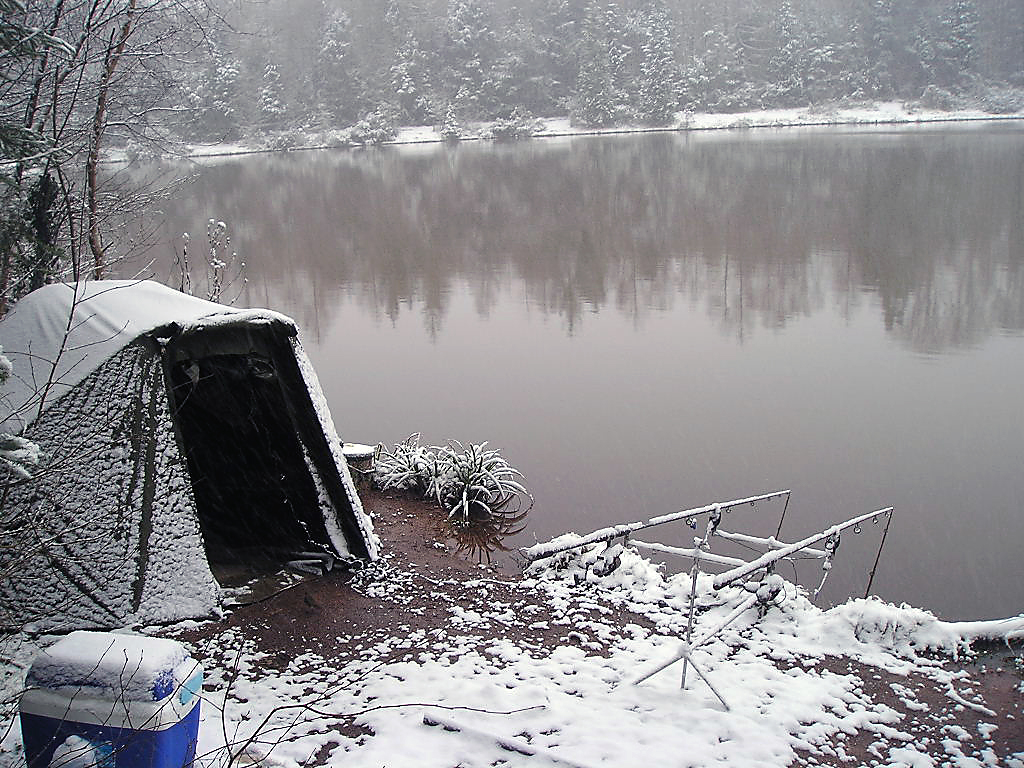Tips
Carp Fishing in the Winter – What bait
Winter carp bait – Something different for the winter
The lower temperatures of our winter mean that we need to adjust our strategies to suit, these changes can be within any aspect of the approach. The plentiful natural food of the warmer months has decreased with the drop in water temperature, our baits and methods may need to be changed or adjusted accordingly. Doing something a little different may mean the difference between success and failure.
It is generally thought that small amounts of bait in the right spots will be beneficial throughout the periods of low water temperatures. I believe that the baiting levels during all times of the year are situational dependant, if they are feeding strongly then it may be worth putting a bit of bait on their dinner plates whatever the time of year. I have caught carp over large beds and single hook baits by adapting the approach to suit the feeding intensity but will state that more often than not single hook baits or a handful of feed has been the more productive tactic. However, I’ve had some of my best cool water catches over a bed well placed naturals, maggots and worms being devastating when first used in large amounts.
The well known methods of maggots and castors are well publicised and used. Therefore I will avoid another article on that subject and concentrate my attentions on some very effective but lesser used baits and methods.
Bloodworm as bait
The midge larva or blood worm as it is better known can be found in the silt/soft debris of most lakes. They form part of the carps favourite diet in the warmer months, but are very difficult to use as a carp bait or attractor due to being mouth watering to just about everything that swims. There are fewer nuisance species in the winter, which means they are now a viable option as an attractor or hook bait. How many times have you heard the statement, “they are feeding on naturals?” If that is the case then use naturals to catch them! Or is that too complicated? Too many anglers have a single tactic approach; there are many baits that may be preferable to the oft used boilie’s and pellets.
To use as hook baits it is necessary to place a large bunch in a mesh, similar to netting a boilie against nuisance species (detailed later in the article.) Alternately fish the enterprise imitations over freshly defrosted bloodworm.
They can be mixed with most ground baits and particles and fished in a PVA bag or method. A 50/50 mix of bloodworm and white bread crumb will catch on many lakes if placed in the right spot i.e. on their dinner plate. The breadcrumb prevents the wet blood worm from melting the bag and also makes the petite red worms extremely visible when lying on the light crumb, an awesome mix on waters where there are few pest species.
Some tackle shops supply bloodworm that is normally stocked for the match angling fraternity. Dried bloodworm is an alternate and available from a number of bait companies but bare in mind they float. I also believe that many of the natural juices are lost within the drying process, hence the reason I prefer the frozen version. The cost is approximately £14.00 per kg block.
Belachan for carp
This is a very strong smelling pure fermented shrimp paste that has been compressed into a block. The stuff stinks! It can be moulded into a paste and used as a hook bait or grated into a ground bait mix. The addition will give a totally different, very attractive aroma to any mix and a worthwhile addition at any time of the year. Do wash your hands thoroughly after touching it and don’t let the long haired Colonel catch you using her favourite cheese grater! I carried out the process using the one in the kitchen draw, only to find that the said grater was then used on the carrots for the Sunday dinner! It is also very effective when kneaded into a paste and wrapped on a hair. These pastes are available from a number of Chinese food shops or from CC Moore.
Melting hook baits (hard hook bait with slow break down outer layer)
The Germany based company successful baits have developed a product that I use quite often. It consists of a hard inner boilie and an outer ingredient that melts of. I believe the method of production is a closely guarded secret, one thing is certain, they are an excellent winter bait. Sometimes the simplest ideas are the best?
Cockles a great winter bait
In my opinion the carp sees cockles as being similar to a small swan mussel out of the shell, they are similar in appearance albeit a fraction of the size. Many of the lakes I fish in the UK tend to contain numbers of tench that makes them difficult to fish in the summer months. When the water temperature cools and the white fish go off the feed they come into their own.
I have found them very effective when fished in PVA mesh over several spods of whole cockles. A little movement can be achieved via adding a handful of maggots to a pound of cockles, the maggots burrow into the cockles. Once the cockles are immersed in cold water some of the maggots wriggle from the cockles causing minute vibrations that may add to their pulling power.
Cockles tend to be expensive when purchased from a super market therefore I would recommend you search the Internet for a direct supplier. I purchased 6 lb of freshly frozen cockles via a website, they were still frozen on arrival and should last me a couple of trips. Due to the water content they will melt PVA mesh. There are a number of methods that can be employed to overcome this, I prefer to cover them in a small amount of fishmeal, this absorbs the moisture thus reducing the chances of them melting the bags. Alternately they can be doused with fish oil as oils don’t melt PVA mesh. But be aware that oils have a reaction with PVA and slows the breakdown rate, be sure to test prior to casting out!
My preferred method of mounting a cockle is with the use of boilie mesh, in the same manner used to protect a hook bait against nuisance species.
Method of making a bloodworm or cockle hook bait
- Place a couple of cockles in the mesh and wrap/twist the mesh to form a boilie shape.
- Twist the neck of the rounded mesh and tie with some light line.
- Place a spot of glue on the knot to prevent it from coming loose.
- Freeze the hook baits or place them in an oil to preserve them.
- Mount them on the hair as you would a standard boilie.
Conclusion on Winter carp baits
In the cool gloomy conditions that are associated with this time of year, carp are less mobile and reside in localised and favoured spots. It usually takes a little extra effort in location, presentation and baits to get a pick up, your approach should be adjusted to suit. By adapting your methods to the conditions and fishing where the fish are will obviously greatly increase your chances. A wide and sweeping statement but one that if achieved will put some winter fish on the bank. Outwit them using every conceivable edge you can think of, after all they do have a very small brain, but seem so much better at outwitting us than we them. In order to achieve an edge in the winter my methods and baits are varied to some degree, and naturals are used considerably more. The interference from nuisance species is considerably less at this time of year that makes using them a whole lot easier.
Don’t be afraid to try something different on one rod and when using a roving rod the sticky dips come into their own, cold water carping – don’t be afraid to experiment!

